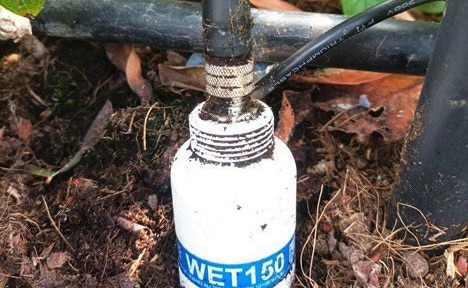Founded in 2021 in Comiso, Italy, Lualtek have fast become a successful solution provider for growers looking to employ the latest technology to achieve optimal crop yield and quality.
They help to achieve this by offering a complete plug-and-play monitoring package – integrating sensors, wireless networks, and AI technology.
The importance of pore water conductivity in optimizing growing conditions
From the outset, Lualtek understood that, in addition to soil/substrate moisture levels, pore water conductivity (ECp) status is an especially important factor in maintaining optimised growing media conditions.
To ensure their systems perform strongly in this regard, Lualtek employs Delta-T Devices’s WET150 SDI-12 Soil Sensor.
The WET150 is a multi- parameter soil sensor that measures moisture, temperature, and pore water electrical conductivity.

Lualtek, ECp and the WET150
Lualteks’s Andrea Angilletti explains why the company considers accurately measuring ECp so important – and how the WET150 is used in their work,
“In agriculture, especially soilless agriculture, it is really important to monitor and control the salt concentration of the nutrient solution (water + fertilizer) both at the starting point (fertilizer) and at the final point (pot/growing bag).
This is where the WET150 really shines, as it is capable of estimating the electrical conductivity of the liquid component present in the soil (pore water EC).
A consequence of this ability is that we are able to detect the absolute values of electrical conductivity in the substrate and compare them with the starting electrical conductivity values in the irrigation water.
This information allows us to have greater control over the water status of the plants grown using our system – and to carry out regular cross-checks that allow us to improve production and reduce water consumption.”

Andrea continues,
“There are a number of sensors that measure EC available on the market, but we selected the WET150 for its ability to directly provide accurate ECp readings.
Other sensors, for example many using TDR technology, measure Bulk EC (ECb). However, these measurements are not indicative of the dissolved ions in the soil water.
In contrast, the WET150 Sensor can calculate the pore water EC – the EC of the nutrient solution within the micropores of the substrate and accessible by the plant roots.”

What this means for growers…
Andrea concludes,
“So, you can see that it is far more useful and important for the grower to reliably know the trend and variation of the electrical conductivity of the solution alone (ECp) inside the pot and not of the entire soil/water system, as the salt concentration of the solution directly affects the root system in the supply of nutrients, regulation osmosis etc.
Furthermore, the extrapolated data from the WET150 Sensor is easy to compare (with the starting EC values) and easy to interpret. The WET150 is widely used in both academic research and commercial crop production and is an ideal sensor to integrate into precision crop management systems.”
Download a PDF of this case study.
Learn more about the WET150 Soil Sensor here.

